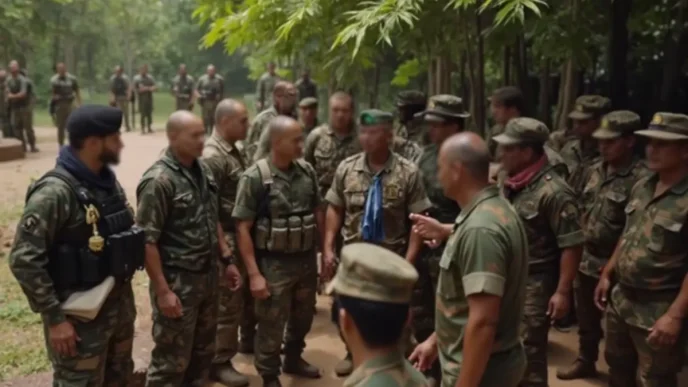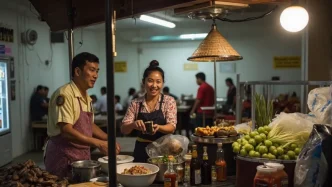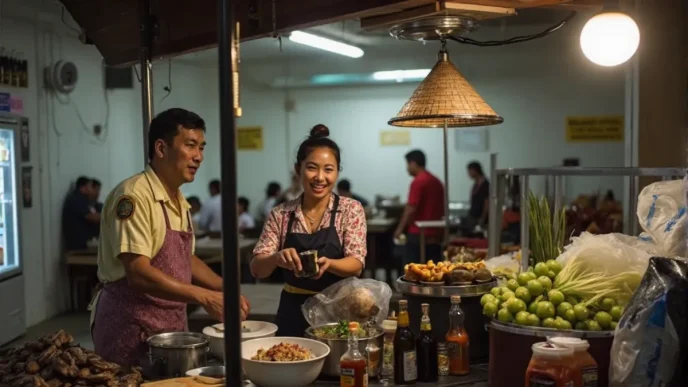In the heart of Bangkok’s Chatuchak district, a race against time unfolds as rescue workers toil tirelessly to clear the wreckage of a collapsed under-construction building. The State Audit Office (SAO) structure on Kamphaeng Phet 2 Road crumbled on March 28, 2025, following a devastating 8.2-magnitude earthquake centered near Mandalay, Myanmar, which shook central Myanmar and Thailand. As of April 9, the confirmed death toll stands at 21, with 73 individuals still unaccounted for, fueling urgency in the ongoing operation.
Clearing the Rubble: A Daunting Task
Bangkok Governor Chadchart Sittipunt provided an update on Tuesday, detailing the scale of the challenge. In the 12 days since the collapse, approximately 10,000 cubic meters of rubble—about 30% of the estimated total of 26,000 cubic meters—have been removed. With 21 vehicles and city officials working around the clock, an average of 2,000 cubic meters of debris is cleared daily. Aerial imagery suggests that the remaining rubble could be cleared by the end of April, though the terrain poses significant obstacles.
“Areas in zones C and D are quite steep, so we have to send staff members in to search for missing persons. If the area above can be opened, the steepness of zone C will be reduced, making the work easier” said Governor Chadchart. The complexity of the site, combined with the sheer volume of debris, underscores the painstaking nature of the rescue and recovery effort.
Commitment Amid Cultural Festivities
As Thailand approaches Songkran, the traditional New Year celebration, the Bangkok Metropolitan Administration (BMA) has vowed not to pause operations. Governor Chadchart emphasized the city’s dedication to the families of the victims, stating that officials will continue working through the holiday period. “We are committed to easing the suffering of the victims’ families” he affirmed. While volunteers may rotate to rest during the break, additional rescue teams will be deployed to maintain momentum.
This decision reflects a broader resolve to prioritize human lives over customary observances, a sentiment echoed by rescue workers on the ground. The cultural significance of Songkran, typically a time of renewal and family gatherings, casts a poignant backdrop to the ongoing tragedy, as many families await news of their loved ones trapped beneath the rubble.
A Regional Disaster with Deep Impact
The March 28 earthquake, one of the strongest to hit the region in recent years, has left a trail of destruction across central Myanmar and parts of Thailand. In Bangkok, the SAO building—still under construction at the time of the quake—bore the brunt of the seismic impact, collapsing and trapping dozens of workers. The incident has raised urgent questions about building safety standards in earthquake-prone areas, particularly for structures in progress that may lack completed reinforcements.
Thailand, while not as seismically active as neighboring Myanmar, lies near fault lines that occasionally produce significant tremors. The 8.2-magnitude quake near Mandalay sent shockwaves through the region, exposing vulnerabilities in urban infrastructure. Experts note that Bangkok’s rapid urbanization, often prioritizing speed over stringent safety checks, may have contributed to the severity of the collapse. While no official investigation has confirmed lapses in the SAO project, the disaster has sparked public calls for stricter oversight of construction practices.
Human Stories Amid the Wreckage
Beyond the statistics and logistical updates, the human toll of the collapse looms large. Families of the missing gather near the site, clinging to hope as each day of searching yields both recoveries and heartbreak. Rescue workers, many of whom have been on duty since the disaster struck, battle exhaustion while navigating hazardous conditions. Images of workers wiping sweat from their faces with elbows—hands too dirty or gloved to touch—capture the grueling reality of their task.
Local communities have rallied to support the effort, providing food and water to rescuers and organizing vigils for the victims. The BMA has also floated plans for a merit-making ceremony once the debris is fully cleared, a traditional Buddhist practice aimed at offering spiritual solace to the families and honoring those who have labored through the crisis. Such gestures, while symbolic, highlight the cultural mechanisms through which Thais process collective grief and seek closure.
Broader Implications for Urban Safety
The collapse of the SAO building is not an isolated incident but part of a larger pattern of infrastructure challenges in Southeast Asia, where rapid development often outpaces regulatory frameworks. In Thailand, the construction boom in cities like Bangkok has transformed skylines but occasionally at the cost of safety. Earthquakes, though less frequent than in countries like Indonesia or the Philippines, remain a latent threat, and this disaster has reignited debates over preparedness.
Urban planners and seismic experts are already weighing in on the need for updated building codes tailored to withstand high-magnitude quakes. While Thailand’s current regulations mandate certain earthquake-resistant designs, enforcement varies, particularly for projects under tight deadlines or budget constraints. If confirmed, any shortcomings in the SAO building’s construction could prompt legal and policy repercussions, though no evidence of negligence has yet been publicly presented.
Moreover, the disaster underscores the interconnectedness of the region’s seismic risks. Myanmar, which bore the epicenter of the quake, has reported widespread damage, though international attention on Bangkok’s collapse has somewhat overshadowed the crisis there. Cross-border cooperation in disaster response, including shared expertise and resources, could emerge as a critical takeaway from this event, potentially strengthening regional frameworks for future calamities.
Economic and Social Ripple Effects
The financial cost of the collapse is still unfolding, with cleanup and potential compensation for victims’ families likely to strain local budgets. The SAO, intended as a key government facility, now represents a significant setback for public infrastructure projects in Bangkok. Preliminary estimates suggest that rebuilding could cost millions, with indirect economic impacts—such as delays in other projects or loss of public trust—adding to the burden. While exact figures remain speculative, costs in Thai Baht could translate to substantial sums in USD, pending official assessments.
Socially, the incident has galvanized public discourse on worker safety, particularly for those in high-risk construction roles. Many of the trapped workers were likely laborers, often drawn from marginalized communities or migrant backgrounds, whose plight highlights systemic inequities in Thailand’s labor market. Advocacy groups have called for better protections and insurance for such workers, a demand that may gain traction as the recovery process continues.
Looking Ahead: Resilience in the Face of Tragedy
As the debris-clearing operation presses on, Bangkok stands at a crossroads. The physical removal of rubble is only the first step; the harder task lies in rebuilding trust, infrastructure, and policies to prevent such tragedies from recurring. The resilience of the city’s residents and officials, evident in their round-the-clock efforts, offers a glimmer of hope amid the devastation.
Yet questions linger about how Thailand, and the wider Southeast Asian region, will adapt to the ever-present threat of natural disasters. Will this collapse serve as a wake-up call for stricter safety standards, or will the urgency fade once the rubble is cleared? For now, the focus remains on the missing 73, whose families wait for answers, and on a city determined to emerge stronger from the aftermath of March 28.














